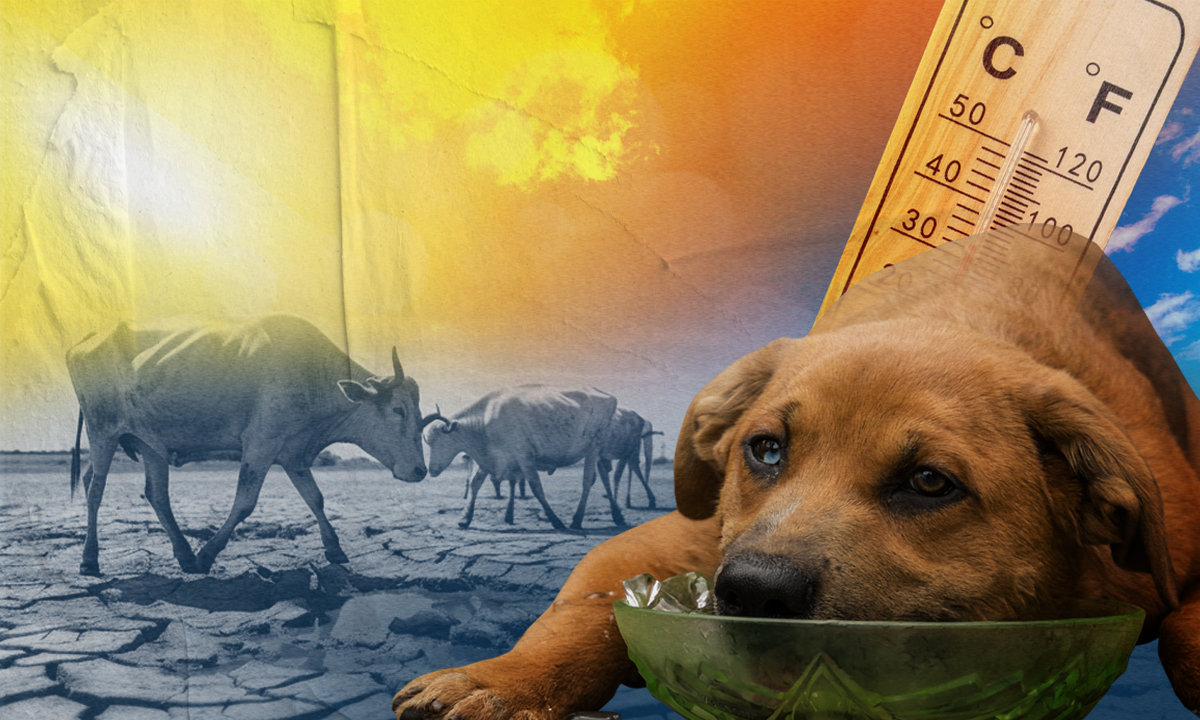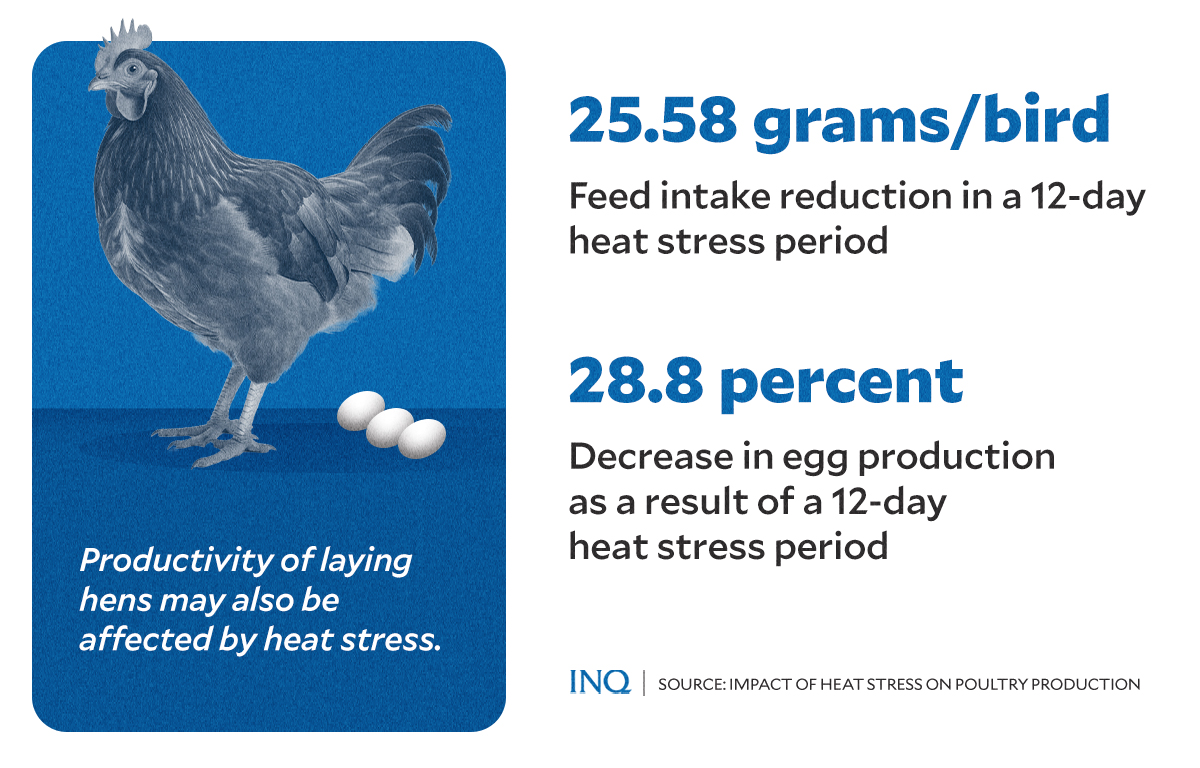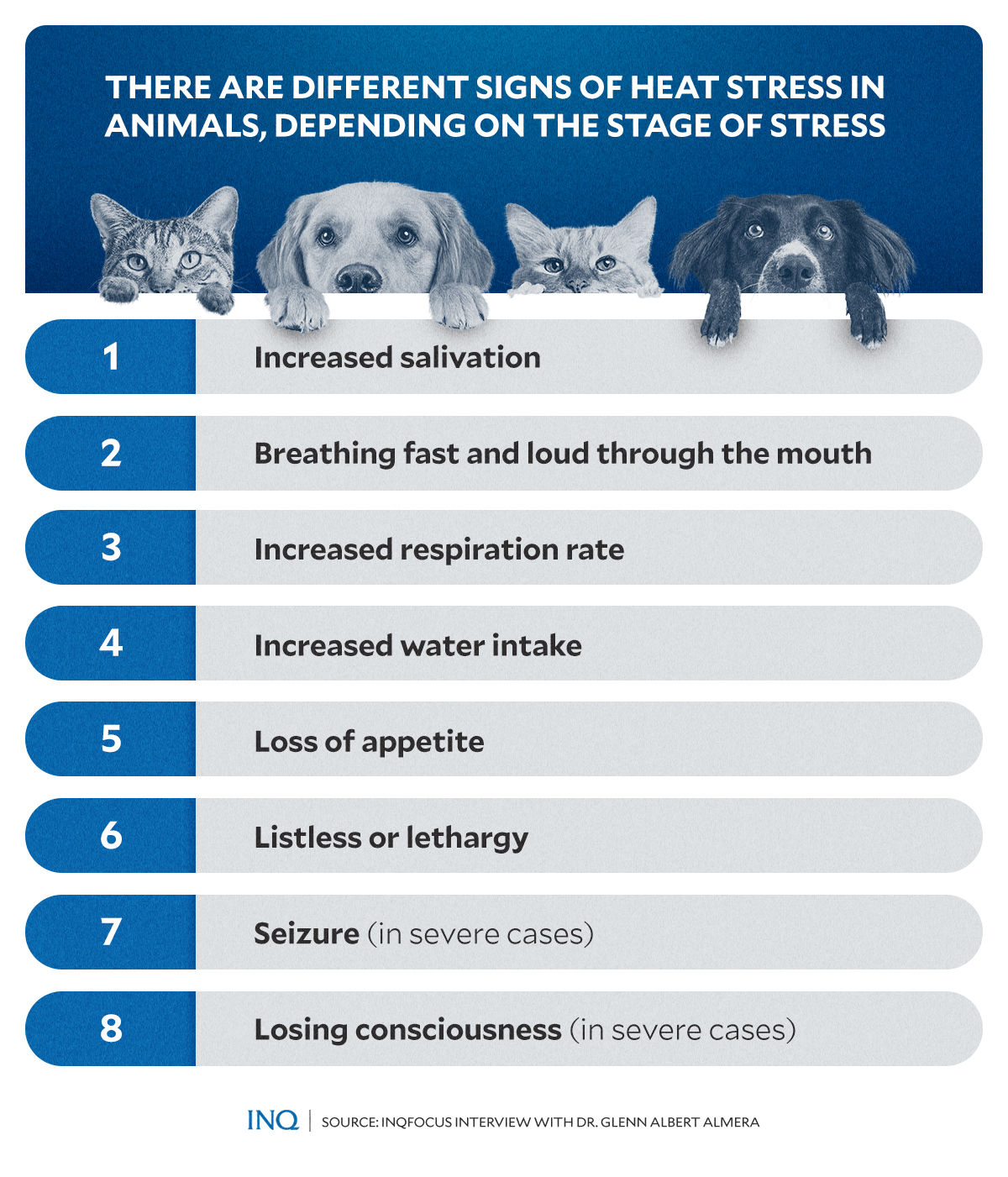Heat nearing 50°C like death sentence for pets, livestock
MANILA, Philippines — Extreme heat, which is expected to exceed dangerous levels next month, is not only exacting a heavy toll on humans, but on animals as well.
Based on the study “Effects of Heat Stress on Animal Physiology, Metabolism, and Meat Quality: A Review” in Science Direct, “heat stress is one of the most stressful events in the life of livestock with harmful consequences for animal health, productivity and product quality.”
The study, written by Paula Gonzales-Rivas, Surinder Chauhan, Minh Ha, Narelle Fegan, Fran Dunshea, and Robyn Warner, said that ruminants, pigs and poultry are susceptible to heat stress because of their fast metabolic rate and growth.
Even their high level of production and species-specific characteristics such as rumen fermentation, sweating impairment, and skin insulation are factors to consider, too.
RELATED STORY: Scorching heat: PH bearing the burden of climate crisis
Last week, the president of the Philippine Egg Board Association, Francis Uyehura, told Teleradyo Serbisyo that “farm producers are already experiencing problems because of the extreme heat,” pointing out that egg production is affected as a result of feed-intake reduction.
The problem, he said, is that eggs are getting smaller.
According to the study “Impact of Heat Stress on Poultry Production” that was published by the US National Center for Biotechnology Information, a 12-day heat stress period caused a daily feed intake reduction of 28.58 grams per bird, resulting in a 28.8 percent decrease in egg production.
The researchers, Lucas Lara and Marcos Rostango, referring to previous studies, said that a 31 percent decrease in feed conversion resulted in a 36.4 percent and 3.41 percent decrease in egg production and egg weight, respectively.
Even eggshell thickness is affected by extreme heat.
RELATED STORY: Protecting ourselves against excessive heat
As for meat, the study “Effects of Heat Stress on Animal Physiology, Metabolism, and Meat Quality: A Review” stated that acute heat stress immediately before slaughter can result in pale, soft and exudative meat characterized by low water holding capacity.
Chronic heat stress, meanwhile, can result in dark, firm and dry meat. Heat stress likewise leads to oxidative stress, lipid and protein oxidation, and reduced shelf life and food safety because of bacterial growth and shedding.
Based on the government’s 2023 El Niño National Action Plan, the phenomenon can cause a wide range of consequences on agriculture such as a decline in food production, increase in food prices, and drop in farm incomes.
As the Department of Agriculture (DA) stated in its bulletin as of last week, April 16, losses and damage to agriculture already reached P4 billion, including P6.95 million in livestock and poultry sectors.
Based on data from Veterinaria Digital and the USDA, which was compiled by wellness brand Dr. Shiba, in the US, heat stress generates a 0.5 percent to 7.2 percent decrease in egg production and costs the dairy industry $1.2 billion yearly.
‘Look out for signs’
As Dr. Shiba said, considering how heat indices often exceed safe thresholds, it would be significant to shed light on the effects of extreme heat on critters, who are really defenseless against heat waves.
Dr. Glenn Albert Almera, founder of Pet Partner Philippines Inc., told INQUIRER.net on Monday, April 22, that heat stress in animals is seen in different casts, depending on the stage of stress.
RELATED STORY: Solon urges creation of protocols for extreme heat
“Initially, it can be seen with increased salivation and faster breathing, and as it progresses with no medical intervention, animals become lethargic and immobile. They can vomit, as well, and in extreme cases, animals experiencing heat stress can have a seizure attack,” he said.
Based on the Australian government website Agriculture Victoria, increased respiration rate, loss of appetite, increased water intake, and loss of consciousness are signs of heat stress in animals, too.
It was stated in the study by Rivas R. et al that pigs and poultry are specifically prone to heat stress because of the lack of functional sweat glands and skin insulation provided by the subcutaneous fat in pigs and by feathers in birds.
However, Almera said other animals are vulnerable, too, with amphibians and reptiles considered to be at greatest risk. “But if we are to focus on small animals such as dogs and cats, old, thick coated and short nose breeds are the most vulnerable to extreme heat,” he said.
RELATED STORY: Heatwave in PH: Outdoor workers risk life, health to live
This, as “old pets have less capability to thermoregulate, while thick coated breeds collect more heat but have less capability to remove them from the body.” Short nose breeds, meanwhile, are prone to some breathing problems when having heat stress.
‘Keep them safe’
For Almera, it is important to keep animals hydrated, saying that water should always be available and that exercises should be minimized, especially when it is already beyond 8:00 a.m.
READ: Tips on how to keep your pets safe and comfortable in hot weather
He said animals should be kept cool, as well, by placing them in a well-ventilated area throughout the day. “Keep their fur short and clean, too,” he said, as he stressed the need for caretakers to always be on the lookout for signs of heat stress and heat stroke.
As the Philippine Atmospheric, Geophysical and Astronomical Services Administration (Pagasa) said, temperature could reach over 40 degrees Celsius in the coming weeks, or next month.
That would usually translate to heat indices of plus two to three degrees Celsius so when the temperature reading is 40, the usual heat index is between 40°C to 43°C.
READ: Pagasa: ‘Extreme danger’ heat levels still to come
Likewise, as weather specialist Dr. John Manalo told GMA Integrated News, some areas in the Philippines may hit extreme danger levels, or temperatures at 52°C or higher, in May.
“Based on Pagasa’s ongoing monitoring of the discomfort index or heat index, there is a possibility that some areas in the country will experience levels of extreme danger, which is 52 degrees or higher,” said Ana Liza Solis, officer in charge of Pagasa’s Climatology and Agrometeorology Division.
READ: Pagasa to improve heat index monitoring system
“With this heat level, heatstroke is imminent or probable [for] people who are directly exposed to sunlight, which is why we need to take precautions,” she said.
RELATED STORY: Heat index in 30 areas, including Naia, to reach ‘danger’ level


















